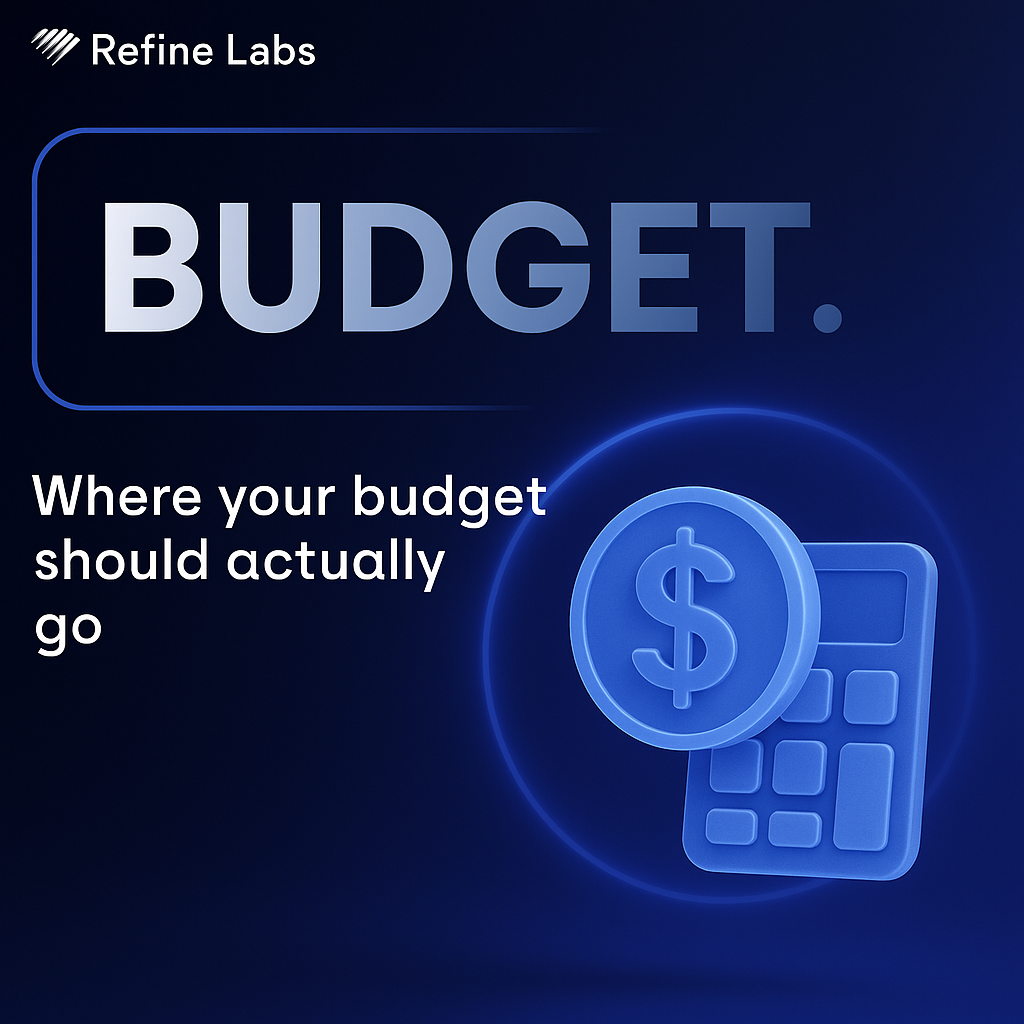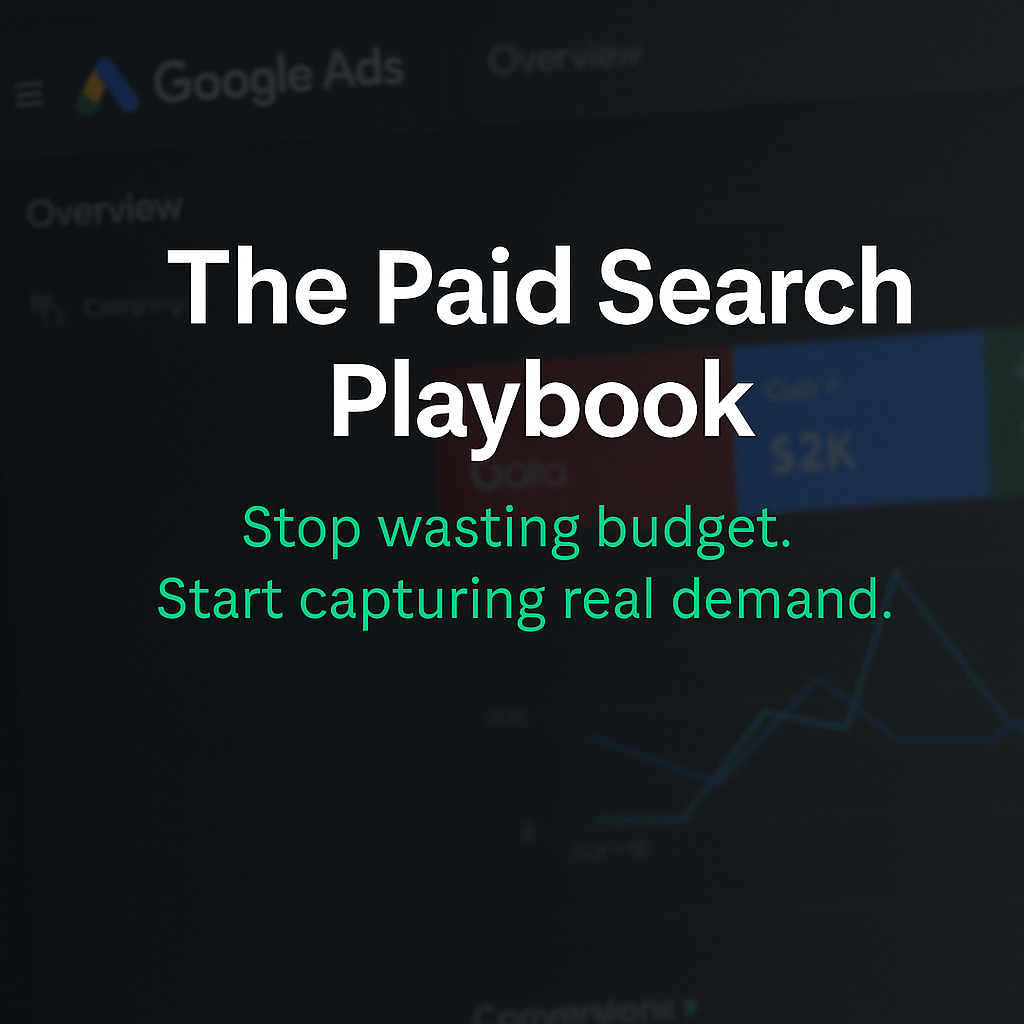
How to Budget Across Brand, Demand, and Expand | Refine Labs
(And avoid wasting half your marketing plan)
Let’s talk about budget.
Because no matter how solid your strategy looks in a deck, if the budget doesn’t match what the business actually needs, your team is going to spend the next quarter spinning.
Over the past few weeks, we’ve been talking about the three core marketing motions: Brand, Demand, and Expand. What they actually mean. What good execution looks like. How to measure each one in a way that’s realistic.
Now we’re bringing it together with the one thing that either builds momentum or quietly stalls it: your budget.
Right now, there’s pressure to show results fast. So it’s no surprise teams default to what’s familiar and usually whatever shows up cleanly in attribution software.
That usually means dumping most of the budget into performance marketing. Because it looks good on paper. Because it’s easier to justify. Because you can point to a dashboard.
But that’s not how strong brands grow. And it’s definitely not how sustainable, efficient businesses scale.
Where budget gets misaligned
A lot of companies default to overfunding Demand.
It shows up in pipeline. It’s tied to revenue. It’s easier to defend in a QBR.
But here’s what happens when demand gets overfunded without the other motions in place:
- You get bloated pipeline from the wrong leads
- CAC goes up
- Sales cycles get longer
- Revenue becomes harder to predict
The issue usually isn’t the spend itself. It’s misalignment between what the business needs and what marketing is actually resourced to do.
Start here instead
At Refine Labs, we’ve been doing the same gut checks internally. We realized our budget still leaned too heavily toward demand and didn’t reflect where our actual growth opportunities were.
So we stopped starting with “how much should we spend on each channel” and started with:
- What’s the business trying to solve?
- What’s getting in the way?
- Can AI help us improve effienciencyor create friction in each?
- Which motion: brand, demand, or expand will help fix it?
That question alone are changeing how we plan.
In H2, here’s how we're adjusting in real-time based on that:
- Brand needed even more weight. We've leaned into founder-led content, started launching live shows, and doubled down on clarity in how we show up across social and events. We also shifted our paid strategy to focus more on awareness and message testing with a variety of content.
- Demand needed to be reset. Paid performance wasn’t converting efficiently, and we realized it wasn’t a spend problem it was a creative and messaging gap. So we reworked the creative, paused underperforming channels and started building new test frameworks for Q4 and onboarding new tools for tighter targeting expirementation.
- Expand was getting overlooked. We haven't mastered this. But we're building in real-time to improve the user experience, launched churn surveys, and connected content to customer education instead of just top-of-funnel traffic. W
This wasn’t about big swings. It was about getting honest and fixing the gaps we’d ignored for too long.
A simple gut check to reset your budget
If you want to run the same exercise we did, here’s what we recommend:
Step 1
Pull your last two quarters of inbound revenue. Get enough volume to see patterns. If your sales cycle is long, go even further back.
Step 2
Map each deal back to its real source.
Use self-reported attribution, attribution software, sales notes, call recordings. Whatever helps get closer to the truth.
Step 3
Label the origin by motion. Did that deal come from Brand, Demand, or Expand activity?
Step 4
Compare the results to your budget.
If you spent 80 percent of your budget on paid programs, but your best inbound came from organic or word of mouth, that’s a misalignment.
If 40 percent of your revenue came from existing customers, but Expand got zero investment, that’s another gap.
We’re doing this right now. Not as a one-time audit. As an input to 2026 planning. And we’re adjusting in real time based on what’s working, not just what’s easy to defend.
The budget split we’re looking at now
There’s no perfect ratio, but here’s the working model we’re using at Refine Labs:
- Brand (20 to 30%)
Content, organic social, events, paid visibility, creative testing, founder-led media - Demand (50 to 60%)
Performance media, conversion strategy, website, landing pages, nurture - Expand (10 to 20%)
Customer campaigns, onboarding, retention strategy, churn prevention, product marketing
You don’t need to follow these exact numbers. The goal isn’t balance. It’s clarity.
What’s broken right now?
What’s not getting funded?
What needs to move, and what’s in the way?
Let that guide the budget.
Your budget tells the truth
You can say brand matters, but if 90 percent of your spend goes to paid search, then brand is not a priority.
You can say customer success is core to your business, but if marketing isn’t involved post-sale, you’re leaving growth on the table.
Budgets tell the real story. Not slide decks.
So if you’re heading into 2026 planning, ask yourself:
- What motion are we underfunding just because it’s hard to measure?
- What are we still paying for because it worked in 2022?
- Are we funding the things we actually believe in, or just what’s easy to report?
You don’t need to rebuild everything. But if what’s driving growth today looks nothing like what you’re funding, it’s time to reset.
We’re doing that work now. So we figured we’d share!
- Evan
----------
Refine Labs is the leading B2B demand generation agency that has helped over 300+ B2B companies accelerate revenue growth and improve marketing ROI with innovative marketing strategies.
Learn more at www.refinelabs.com. Connect with us on LinkedIn and YouTube.
Listen to our Podcast with weekly episodes Stacking Growth.









